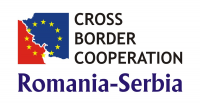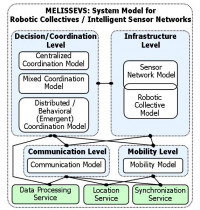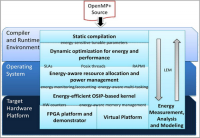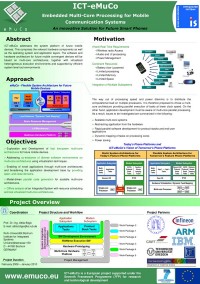Research Projects

Cross-border access infrastructure to high-level education through web-casts
Project objectives:
- Increasing educational exchanges through a common cross-border approach in the area of technical education by implementing an Education web-cast system;
- Creating a cross-border partnership between the Faculty of Automation and Computers from Timisoara and the Technical Faculty from Zrenjanin;
- Improving the quality of education for the students and pupils from the border area Increasing the overall competitiveness of the economy in the border area.
Project results: EduWebCast systems, lectures that will be broadcasted through the portal, users of the portal, meetings attended by members of both teams, information and publicity events, conferences.
Target groups: University students from the two universities, High school pupils in the cross border area, Graduated students that are employed especially in companies that are located in the border region.
Octavian PROSTEAN, Cristian VASAR, Anca Sorana POPA

JCBICS-UDPUT: Joint Cross-Border Internet Communication System of the University of Debrecen and Politehnica University of Timisoara
University of Debrecen, as main partner, and the Politehnica University of Timisoara, as cross-border partner, submit a proposal with the stated goal of integrating in a cross-border communication system the local network systems of the two partners. The overall objective of the project is to enable enhanced capacity for cross-country cooperation and interaction between and within the participating universities by providing high quality WiFi system and IP streaming system for the students, professors and researchers at the University of Debrecen and Politehnica University of Timisoara, aiming at supporting the synchronization of educational, research and development, and other scientific activities of the cooperating universities.
This project influences the cooperation activity of the universities involved, facilitating collaboration between the target groups, university students, researchers.
Marian SALAVAT
GEMSCLAIM: GreenEr Mobile Systems by Cross LAyer Integrated energy Management
Personal computing currently faces a rapid trend from desktop machines towards mobile services, accessed via tablets, smartphones and similar terminal devices. With respect to computing power, today´s handheld devices are similar to Cray-2 supercomputers from the 1980s. Due to higher computational load (e.g. via multimedia apps) and the variety of radio interfaces (such as WiFi, 3G, and LTE), modern terminals are getting increasingly energy hungry. For instance, a single UMTS upload or a video recording process on today´s smartphones may consume as much as 1.5 Watts, i.e. roughly 50% of the maximal device power. In the near future, higher data rates and traffic, advanced media codecs, and graphics applications will ask for even more energy than the battery can deliver. At the same time, the power density limit might lead to a significant share of “Dark Silicon” at 22nm CMOS and below. Obviously, disruptive energy optimizations are required that go well beyond traditional technologies like DVFS (dynamic voltage and frequency scaling) and power-down of temporarily unused components.
The GEMSCLAIM project aims at introducing novel approaches for reducing this “greed for energy”, thereby improving the user experience and enabling new opportunities for mobile computing. The focus is on three novel approaches: (1) cross layer energy optimization, ranging from the compiler over the operating system down to the target HW platform, (2) efficient programming support for energy-optimized heterogeneous Multicore platforms based on energy-aware service level agreements (SLAs) and energy-sensitive tunable parameters, and (3) introducing energy awareness into Virtual Platforms for the purpose of dynamically customizing the HW architecture for energy optimization and online energy monitoring and accounting. GEMSCLAIM will provide new methodologies and tools in these domains and will quantify the potential energy savings via benchmarks and a HW platform prototype.
Gabriel GIRBAN, Lucian BARA
ICT-eMuCo: Embedded Multi-Core Processing for Mobile Communicating Systems
ICT-eMuCo addresses the platform architecture of future mobile devices. This comprises the relevant controller elements as well as the operating system and application layers. It is expected that the computational performance needed by these devices will grow exponentially due to the growing number of features implemented and the advances in the wireless communication standards. The fast growing number of applications and the resulting diversification requires a co-existence of open and protected environments.
It is therefore proposed to choose a multi-core architecture to get the best ratio of performance and power consumption while maintaining a high flexibility and scalability in the system through variations in number of cores, cache sizes, clock speeds etc. Existing multi-cores are taken as a starting point for the controller architecture. The actual implementation of e. g. the cache and memory system will be optimized to the specific needs as well as the extension by hardware accelerators for dedicated tasks.
Virtualization technology will be employed to abstract the applications including potential legacy operating systems from the hardware architecture. This provides the means to separate real-time from non-real-time and secure from open domains. To account for the embedded nature of mobile devices and its limitations in performance and power consumption the virtualization functionalities are supported by hardware where appropriate.
The awareness for the existence of multi-cores must also arise at the programmer's level. This is taken care of by a model-driven code generation technology based on SDL for typical communications protocol tasks and UML for the application development and modelling.
Dacian TUDOR, Georgiana MACARIU

Methods and tools for continuous quality assurance in complex software systems
The ever increasing impact of software systems and the high degree of societal dependence with respect to them, especially for infrastructure make it extremely important for software to evolve, in order to adapt to the new social and economic needs.
To make software evolution possible, a superior quality of its design and implementation process must be ensured.
For this reason, existing software must be continuously supported by automated systems for analysis, diagnose and improvement of code and design.
The project proposes an agile (continuous) approach to quality assurance for complex software systems, at the level of code (by means of static analysis and testing) and design (by means of metrics-based detection and correction of design flaws).

MELISSEVS: Development and Analysis of an Integrated Model for Representation of Collaborative Robotic and Intelligent Sensor Systems in Environment Exploration and Supervision Applications
The project approaches a multi-disciplinary thematic area, covering high-priority fields of fundamental and applicative research: environment quality and security, collaborative robotic environments, intelligent sensor networks, emergent behavior, mathematical modeling and formalization.
The goal of the project is the development and analysis of an integrated model for representation of collaborative robotic and intelligent sensor systems, MELISSEVS, for the implementation of environment exploration and supervision applications with direct impact on the modern information-based society, the introduction of high-end technologies in the industry and in every-day life, as well as for the protection of the environment. The main objectives of the project focus on the study and implementation of the following aspects: the definition, integration and validation of a coherent set of models for the formalization of collaborative behavior patterns, of the infrastructure, the provided services and the interactions within robotic collective and intelligent sensor systems, as well as on the evaluation of the entire modeling system in the context of a set of applications for exploration, supervision and operation in various types of environment.
The project resources include a research team with rich theoretical and practical experience in the field (2 PhD. staff and 3 PhD. students), as well as an inter-disciplinary research and development network, RTE-DSP, composed of 4 well-equipped laboratories. The project results will consist of the integrated modeling system MELISSEVS to provide an ideal framework for the development and analysis of complex applications involving collaborative-type distributed intelligence, perception and operation, as well as of a number of complete methodologies, studies and applications in the field, the successful finalization of the PhD. program for 3 team members, and an important number of highest-level scientific publications.




